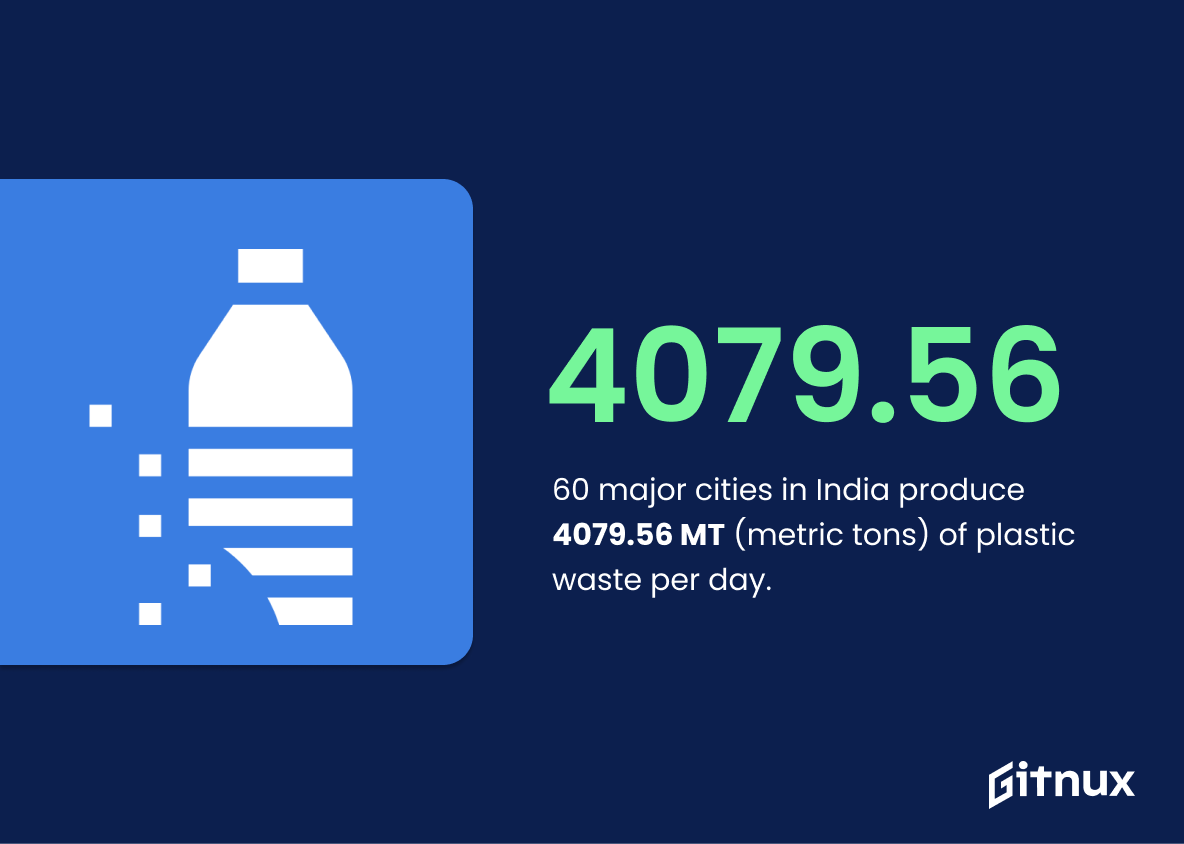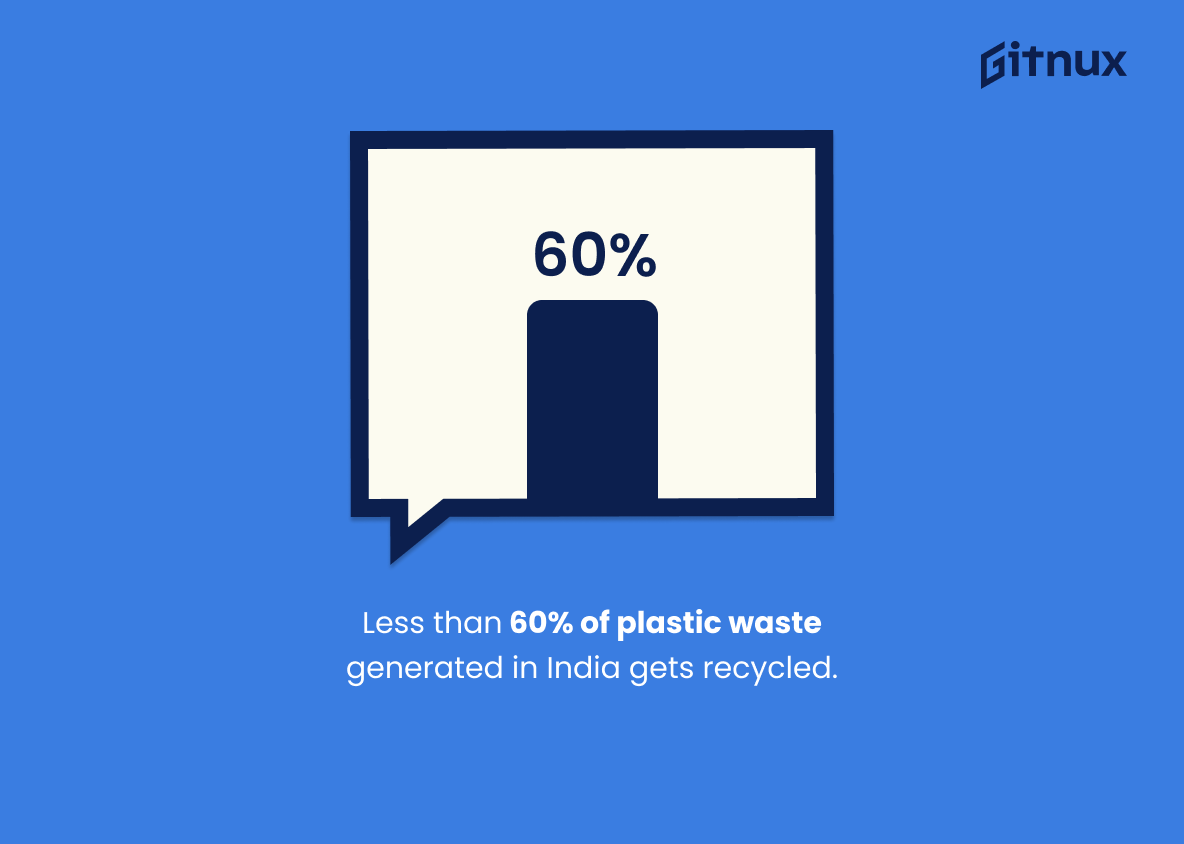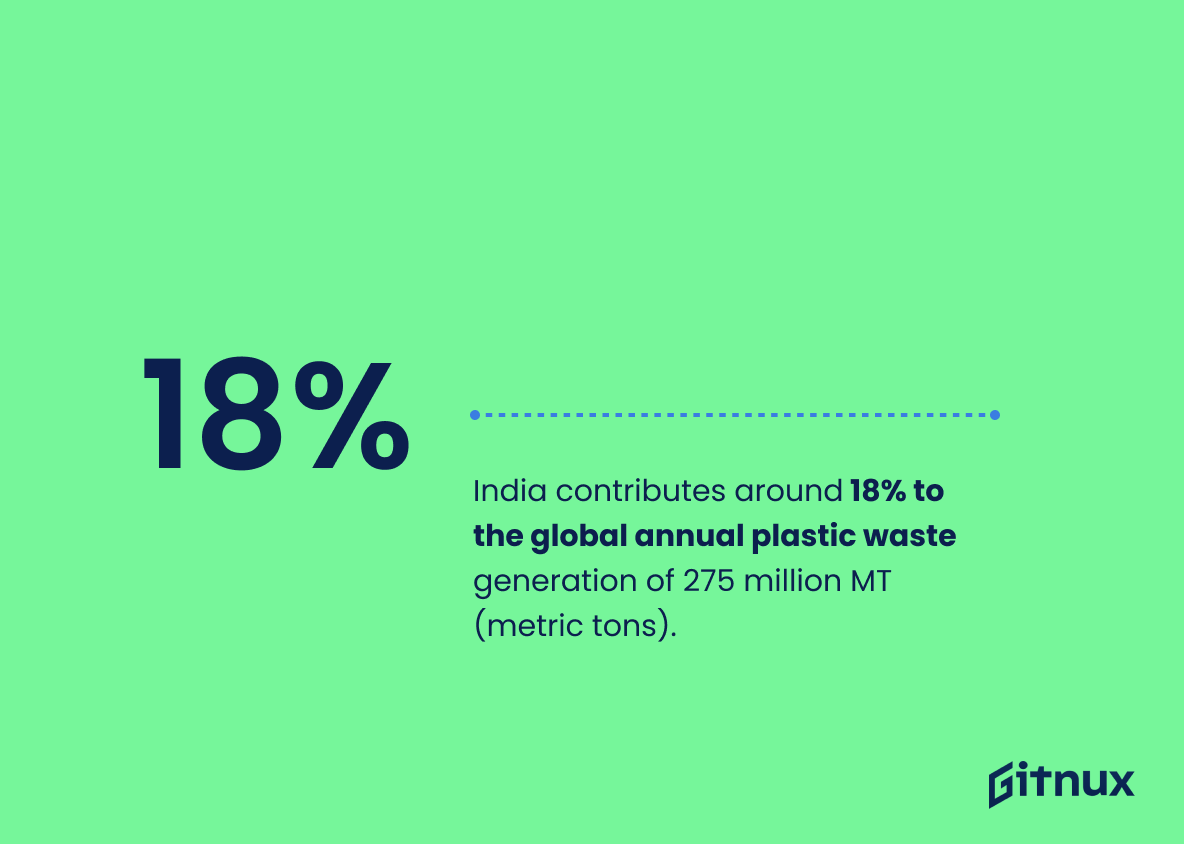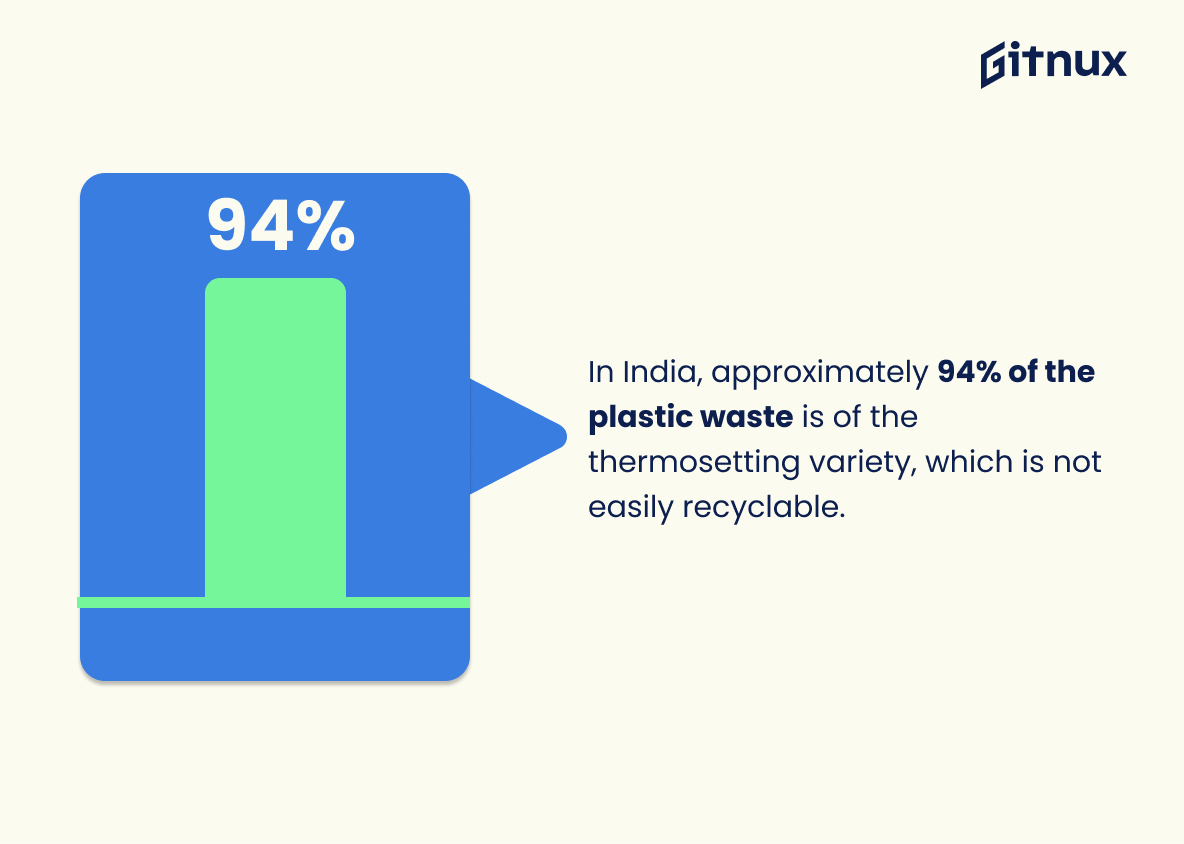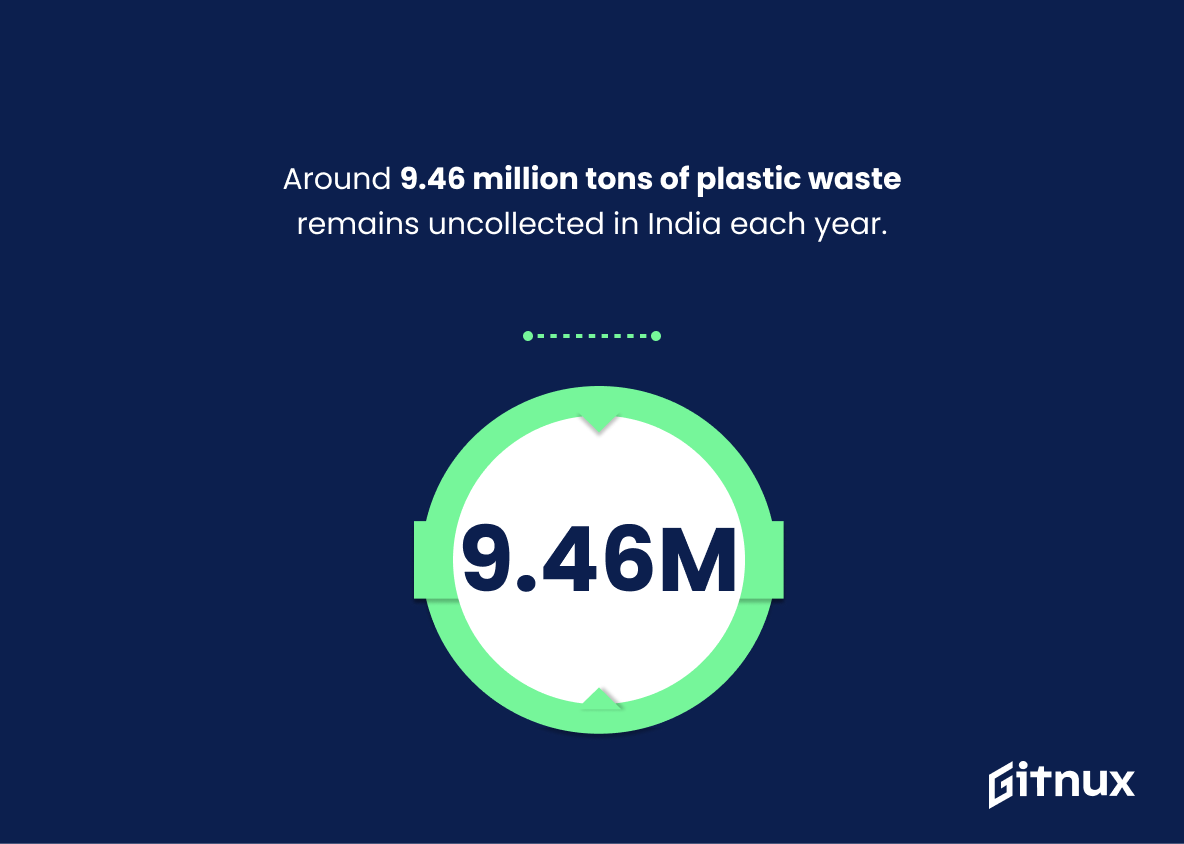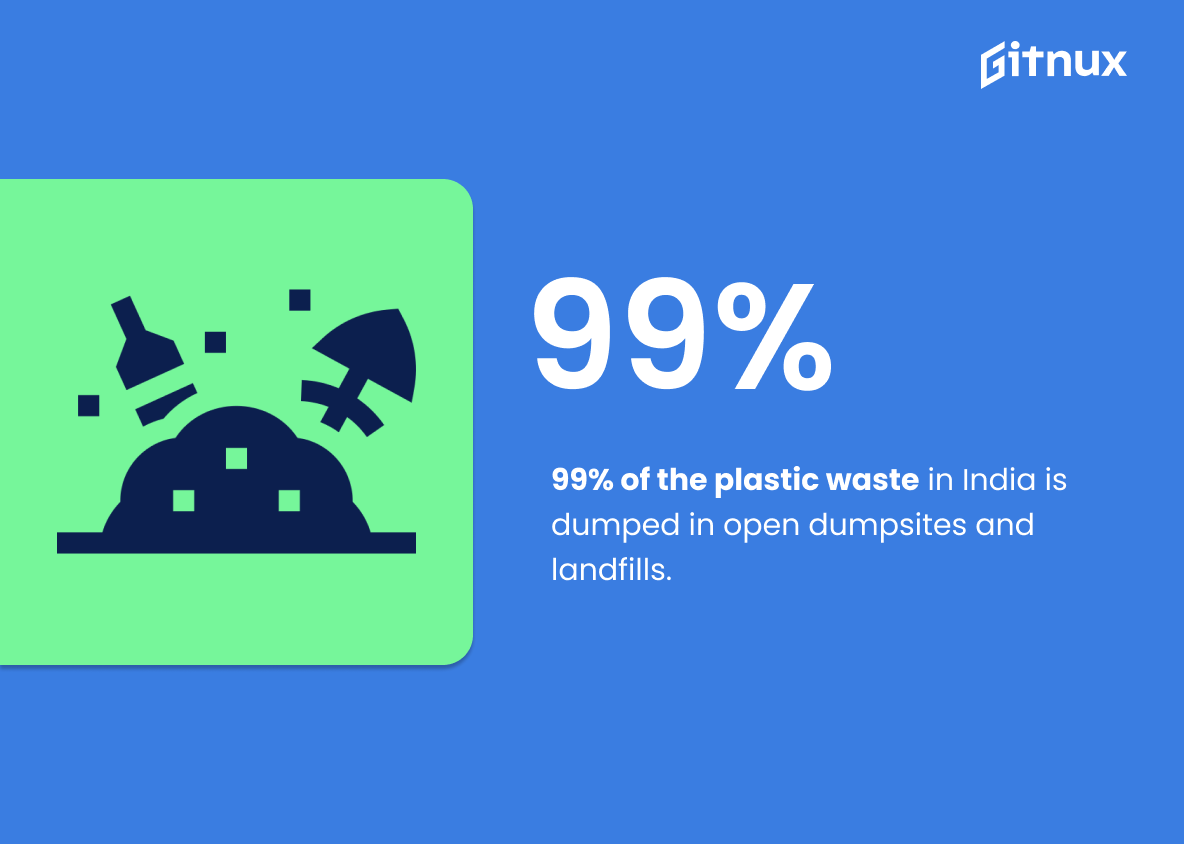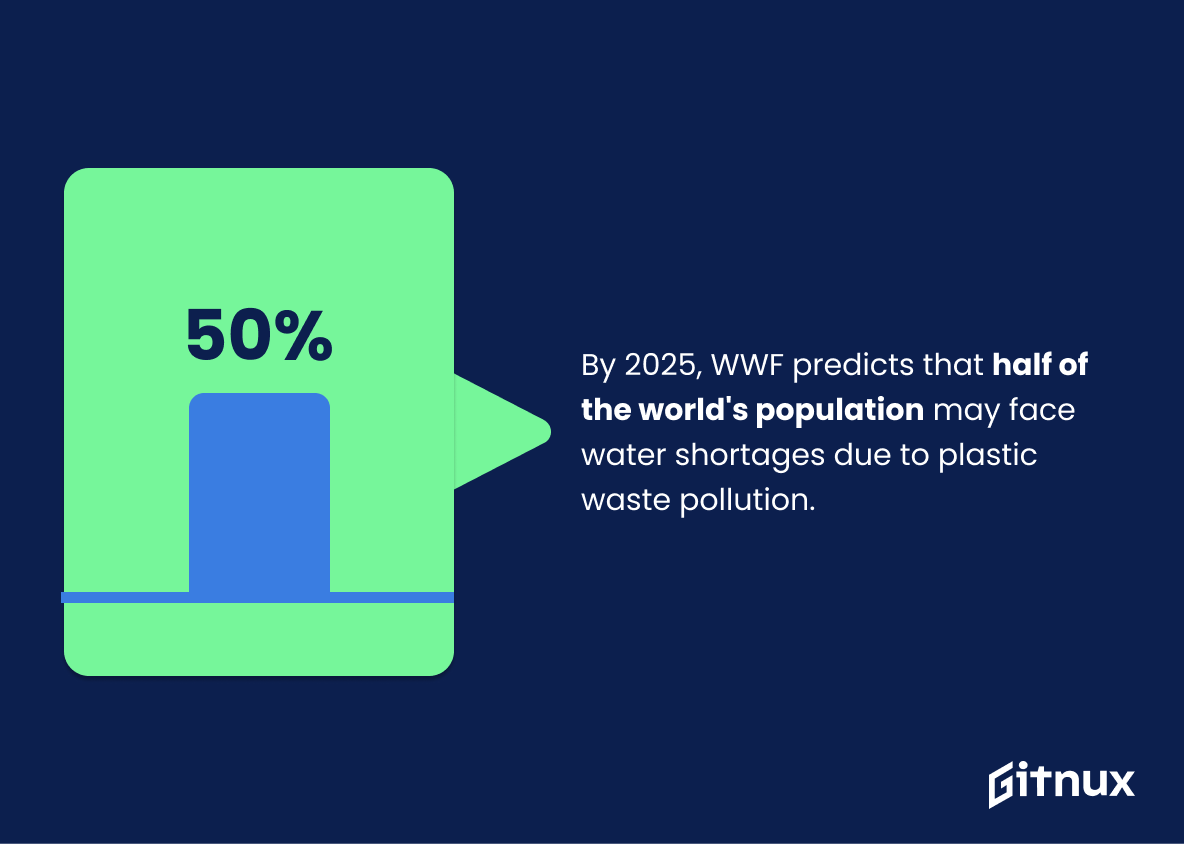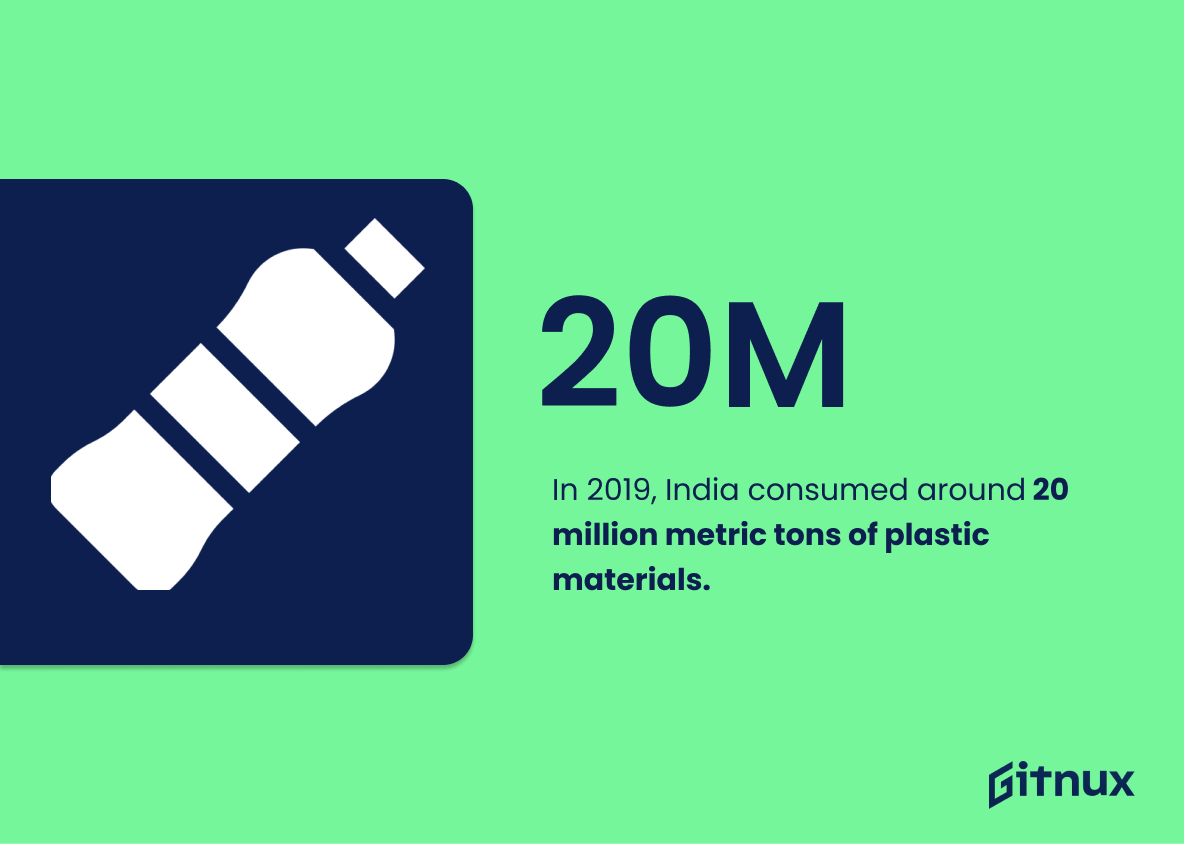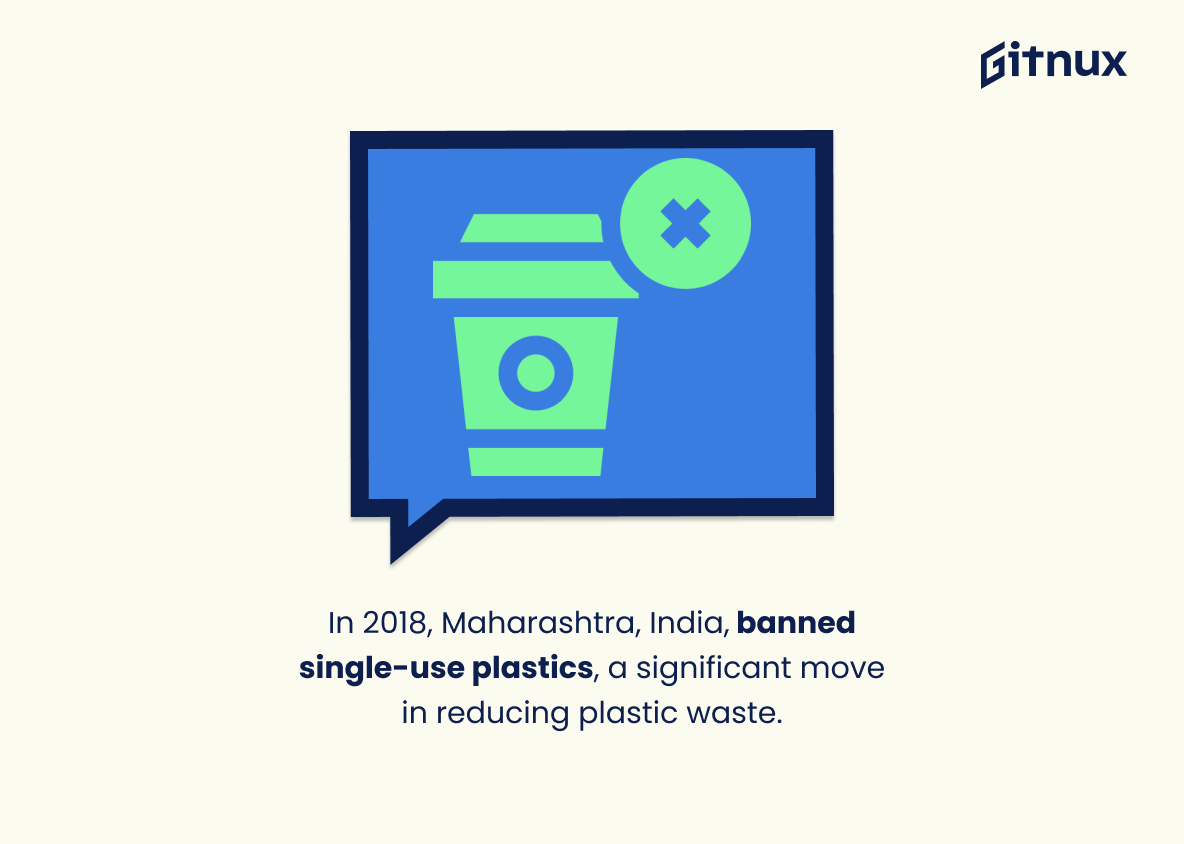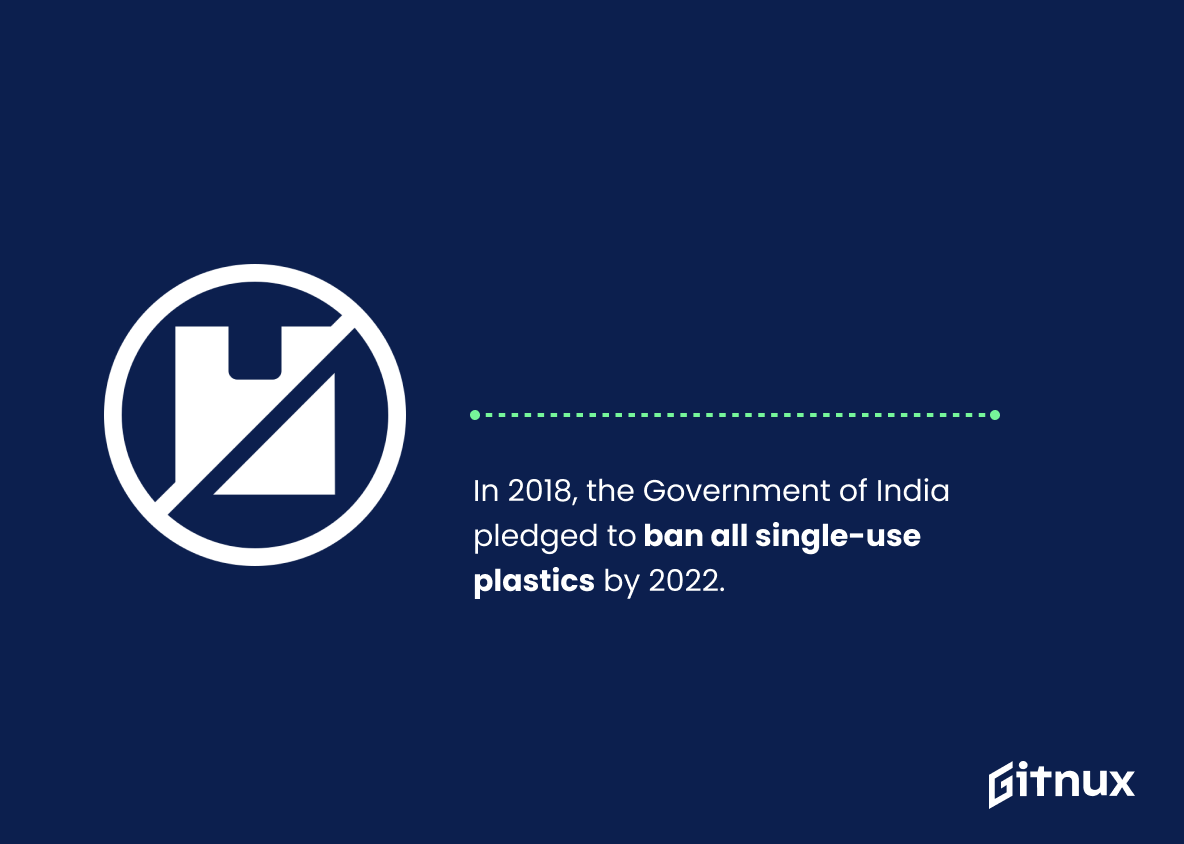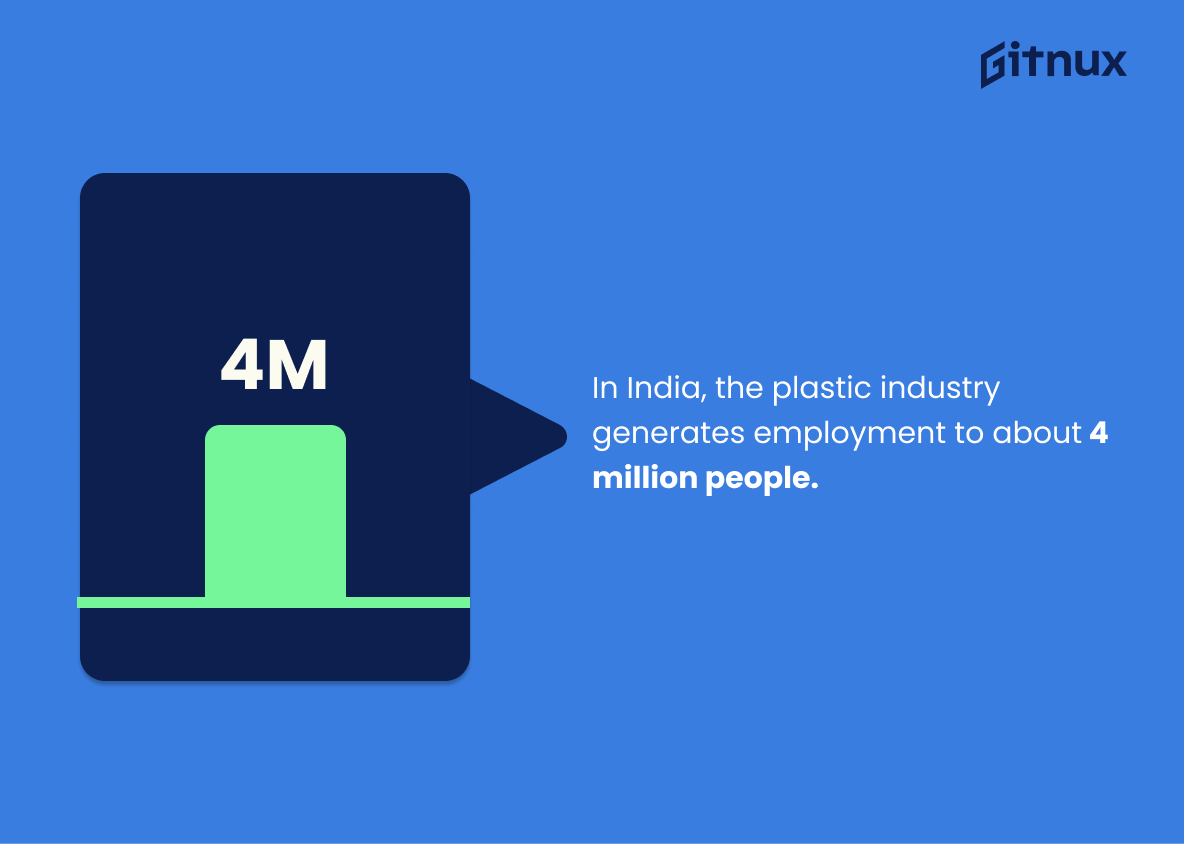Plastic waste is a major environmental issue in India. According to the Central Pollution Control Board, India generates approximately 25,940 tons of plastic waste daily and around 43% of this manufactured plastic is used for packaging purposes and is single-use plastic. 60 major cities in India produce 4079.56 MT (metric tons) of plastic waste per day while less than 60% gets recycled. Nearly 66% of the total generated plastic waste comes from metropolitan cities alone and contributes 18% to global annual generation which stands at 275 million metric tons annually. 94 %of all plastics are thermosetting variety making it difficult to recycle them whereas 99 % remains uncollected dumped into open dumpsites or landfills each year with 16 percent being multi-layered packaging that cannot be recycled easily . Delhi produces 689.52 MT (metric ton) on an average every day while 11 kgs per capita consumption has been recorded by CPCB yearly basis . There are over 3,000 unregistered manufacturing units producing these materials as well according to WWF ,by 2025 half world population could face water shortages due partly driven by pollution caused by such wastes where 382 million metric tonnes accumulate near coastal regions & marine life annually In 2019 20 million metric tones were consumed across country Maharashtra banned single use plastics 2018 followed up Government pledge ban all such items 2022 but industry provides employment 4million people thus creating dilemma between environment protection economic growth
This statistic is a stark reminder of the immense amount of plastic waste India produces on a daily basis. It serves as a powerful illustration of the magnitude of the plastic waste problem in India, and the urgent need for action to address it.
In India, around 43% of the manufactured plastic is used for packaging purposes and is single-use plastic.
This statistic is a stark reminder of the sheer amount of plastic waste generated in India due to single-use packaging. It highlights the need for more sustainable packaging solutions to reduce the amount of plastic waste generated in the country.
Plastic Waste In India Statistics Overview
60 major cities in India produce 4079.56 MT (metric tons) of plastic waste per day.
This statistic is a stark reminder of the immense amount of plastic waste that is being produced in India every day. It highlights the urgent need for action to be taken to reduce the amount of plastic waste being generated in India, and to ensure that it is disposed of responsibly. It also serves as a warning of the potential environmental damage that could be caused if plastic waste is not managed properly.
Less than 60% of plastic waste generated in India gets recycled.
This statistic is a stark reminder of the immense amount of plastic waste that is not being recycled in India. It highlights the urgent need for more effective waste management strategies to reduce the amount of plastic waste that is not being recycled and to ensure that the plastic waste that is generated is disposed of in an environmentally responsible manner. This statistic is a call to action for individuals, businesses, and governments to take steps to reduce plastic waste and to ensure that the plastic waste that is generated is recycled.
India contributes around 18% to the global annual plastic waste generation of 275 million MT (metric tons).
This statistic is a stark reminder of the immense contribution India makes to the global plastic waste crisis. It highlights the urgent need for India to take action to reduce its plastic waste output and become a leader in the fight against plastic pollution.
In India, approximately 94% of the plastic waste is of the thermosetting variety, which is not easily recyclable.
This statistic is a stark reminder of the immense challenge India faces in tackling plastic waste. With such a high proportion of plastic waste being of the thermosetting variety, it is clear that India needs to take drastic measures to reduce the amount of plastic waste produced and to find ways to recycle the plastic that is already present. This statistic serves as a call to action for India to take the necessary steps to reduce plastic waste and to find ways to recycle it.
Around 9.46 million tons of plastic waste remains uncollected in India each year.
This statistic is a stark reminder of the immense amount of plastic waste that is left uncollected in India each year. It serves as a wake-up call to the urgent need to address the plastic waste crisis in India, and the devastating environmental and health impacts it has on the country. It is a call to action for individuals, businesses, and governments to take responsibility and work together to reduce plastic waste and its impacts.
99% of the plastic waste in India is dumped in open dumpsites and landfills.
This statistic is a stark reminder of the magnitude of the plastic waste problem in India. It highlights the urgent need for action to address the issue, as the vast majority of plastic waste is not being disposed of in a responsible manner. It also serves as a warning that if the current situation is not addressed, the environmental and health impacts of plastic waste will only worsen.
Delhi, the Indian capital, generates approximately 689.52 MT (metric tons) of plastic waste daily.
This statistic is a stark reminder of the immense amount of plastic waste that is generated in Delhi, the Indian capital, on a daily basis. It serves as a powerful illustration of the magnitude of the plastic waste problem in India, and the urgent need for action to address it.
There are over 3,000 unregistered plastic bag manufacturing units in India.
This statistic serves as a stark reminder of the sheer magnitude of plastic bag production in India, and the potential for the country to become a major contributor to the global plastic waste crisis. It highlights the urgent need for more stringent regulations and enforcement of existing laws to reduce the amount of plastic waste generated in India.
According to the World Wildlife Fund (WWF), by 2025, half of the world’s population could be facing water shortages partly driven by plastic waste pollution.
This statistic serves as a stark reminder of the potential consequences of plastic waste pollution. It paints a dire picture of a future where half of the world’s population could be facing water shortages due to plastic waste, and highlights the urgent need for action to be taken to reduce plastic waste in India and around the world.
India’s coastal and marine regions accumulate around 38.2 million metric tons of plastic waste.
This statistic is a stark reminder of the immense amount of plastic waste that is accumulating in India’s coastal and marine regions. It serves as a powerful illustration of the magnitude of the plastic waste problem in India, and the urgent need for action to address it.
In 2019, India consumed around 20 million metric tons of plastic materials.
This statistic is a stark reminder of the immense amount of plastic waste India is producing. It highlights the urgent need for India to take action to reduce its plastic consumption and to find ways to manage the plastic waste it is already producing. It is a call to action for India to take responsibility for its plastic waste and to work towards a more sustainable future.
The state of Maharashtra in India banned single-use plastics in 2018, taking one of the major steps in reducing plastic waste.
This statistic is a testament to the fact that India is taking serious steps to reduce plastic waste. The ban on single-use plastics in Maharashtra is a major step in the right direction and shows that the country is committed to tackling the issue of plastic waste. It is a sign of hope that India is taking the initiative to reduce plastic waste and is leading the way in the fight against plastic pollution.
In 2018, the Government of India pledged to ban all single-use plastics by 2022.
This statistic is a beacon of hope for India’s plastic waste crisis. It shows that the government is taking the issue seriously and is willing to take action to reduce the amount of plastic waste in the country. This is a positive step forward in the fight against plastic pollution and could have a significant impact on India’s environment in the coming years.
In India, the plastic industry generates employment to about 4 million people.
This statistic is a powerful reminder of the importance of the plastic industry in India. It highlights the fact that the industry is a major source of employment for millions of people, and that any changes to the industry could have a significant impact on the livelihoods of these individuals. It also serves as a reminder of the need to find sustainable solutions to the plastic waste crisis in India, as any changes to the industry could have a devastating effect on the lives of those employed in it.
Conclusion
The statistics presented in this blog post demonstrate the magnitude of plastic waste generated and mismanaged in India. It is clear that single-use plastics are a major contributor to the problem, with 43% of manufactured plastic being used for packaging purposes. The government has taken steps towards reducing plastic pollution by banning single-use plastics and pledging to ban all such materials by 2022. However, more needs to be done as only 60% of total waste gets recycled while 99% remains uncollected or dumped into open dumpsites and landfills each year. Additionally, 16% of India’s single-use plastic waste consists of multi-layered packaging which is almost impossible to recycle. To address these issues effectively, it is essential that both citizens and businesses take responsibility for their actions when it comes to using disposable items made from nonbiodegradable material like plastics so as not compromise our environment any further.
References
0. – https://www.timesofindia.indiatimes.com
1. – https://www.thehindu.com
2. – https://www.business-standard.com
3. – https://www.worldwildlife.org
4. – https://www.en.reset.org
5. – https://www.statista.com
6. – https://www.plasticstoday.com
7. – https://www.worldbank.org
8. – https://www.indiainfoline.com
9. – https://www.undp.org
10. – https://www.analyticsinsight.net
11. – https://www.downtoearth.org.in
12. – https://www.ndtv.com
